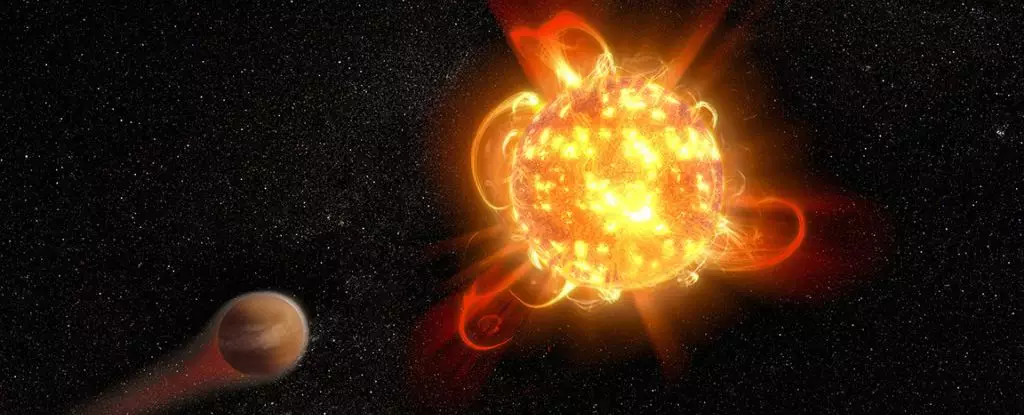Red dwarfs, classified scientifically as M-class stars, are often viewed as serene celestial objects, notable for their widespread presence in our galaxy. These stars, characterized by their relatively modest size and temperature compared to our Sun, have garnered attention in the quest for extraterrestrial life. With estimates suggesting that around 70 percent of stars in the Milky Way fit this classification, the allure of discovering habitable exoplanets around these red dwarfs remains high. However, emerging research calls into question the suitability of these systems for hosting life due to intense phenomena that accompany these stars.
The Benefits of Red Dwarfs
The defining characteristics of red dwarfs include their low mass and surface temperatures, which contribute to an astoundingly long lifespan. While our Sun might shine for about 10 billion years, red dwarfs can burn for trillions of years, making them stable and relatively undemanding neighbors in the cosmic neighborhood. Their long lifespans provide a fertile ground for planets to develop complex life forms, especially given the higher probability for rocky planets to enter the habitable zone. This temperate region may offer conditions conducive to liquid water—a crucial element for life as we know it.
Despite these seemingly favorable conditions, new research offers a sobering reminder of the risks associated with M-class stars. A study analyzing data from the GALEX space telescope reveals that red dwarfs could emit significantly more ultraviolet (UV) radiation during stellar flares than previously understood. Historically, the dangers posed by these flares were underestimated, leading to the assumption that the environments surrounding these stars were more stable and hospitable. However, this new information challenges that notion, suggesting that certain stellar dynamics could jeopardize the potential for life on orbiting planets.
The crux of the study involves a meticulous hypothesis that traditional models of stellar emissions do not adequately represent the behavior of red dwarf flares. By scrutinizing data from 182 flares originating from M-class systems, researchers determined that the UV emissions far exceeded what would typically be expected from stellar behavior modeled as a blackbody distribution. While blackbody models have often represented stellar flares, they fall short in describing the high-energy emissions observed in this recent analysis. Interestingly, the majority of the flares analyzed demonstrated 98 percent UV output that surpassed typical blackbody predictions.
This discrepancy raises critical questions about the habitability of planets within the gravitational grasp of red dwarfs. In lower doses, the high-energy photons produced during these flares may catalyze essential biological compounds, potentially paving the way for complex life. However, excessive exposure to such radiation can lead to the depletion of atmospheric layers—including the protective ozone shield—compromising the planet’s viability as a habitat.
This heightened understanding of the dangers associated with red dwarfs stresses the need for a reevaluation of exoplanet searches. As the quest continues to find planets within the habitable zones of M-class stars, it is imperative for astronomers and astrobiologists to incorporate these new findings into their models. While many exoplanets might pass the initial criteria for habitability—such as temperature and metallicity—the potential for harmful UV radiation must be a critical consideration.
In summation, while M-class stars have long been viewed as promising hosts for life, the hidden risks they present call for a reevaluation. The revelations regarding UV emissions complicate our understanding of habitability and compel us to pursue a more nuanced perspective as we continue to search for life beyond Earth. The universe, it seems, is not merely painted in broad strokes; instead, it is teeming with intricate details that demand our attention and caution.

